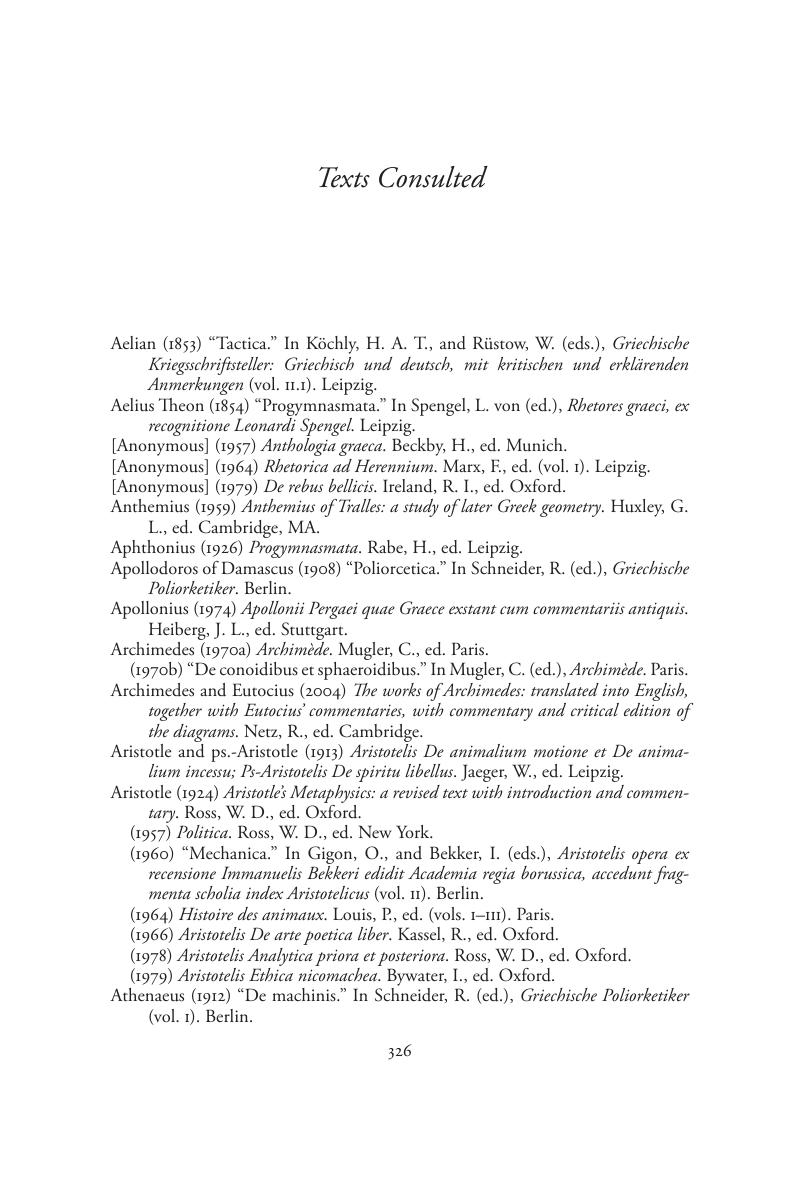 Technical Ekphrasis in Greek and Roman Science and Literature
Technical Ekphrasis in Greek and Roman Science and Literature Book contents
- Technical Ekphrasis in Greek and Roman Science and Literature
- Technical Ekphrasis in Greek and Roman Science and Literature
- Copyright page
- Contents
- Figures
- Book part
- Introduction: The Written Machine
- Chapter 1 Genres: Texts and Artifacts
- Chapter 2 Cultural Contexts
- Chapter 3 The Ekphrastic Complex
- Chapter 4 Diagram and Artifact
- Chapter 5 Description and Instruction
- Chapter 6 Knowledge and Artifact
- Chapter 7 Conclusion: The Limits of Description
- Bibliography
- Texts Consulted
- General Index
- Index Locorum
- References
Texts Consulted
Published online by Cambridge University Press: 05 March 2016
- Technical Ekphrasis in Greek and Roman Science and Literature
- Technical Ekphrasis in Greek and Roman Science and Literature
- Copyright page
- Contents
- Figures
- Book part
- Introduction: The Written Machine
- Chapter 1 Genres: Texts and Artifacts
- Chapter 2 Cultural Contexts
- Chapter 3 The Ekphrastic Complex
- Chapter 4 Diagram and Artifact
- Chapter 5 Description and Instruction
- Chapter 6 Knowledge and Artifact
- Chapter 7 Conclusion: The Limits of Description
- Bibliography
- Texts Consulted
- General Index
- Index Locorum
- References
Summary

- Type
- Chapter
- Information
- Technical Ekphrasis in Greek and Roman Science and LiteratureThe Written Machine between Alexandria and Rome, pp. 326 - 330Publisher: Cambridge University PressPrint publication year: 2016


